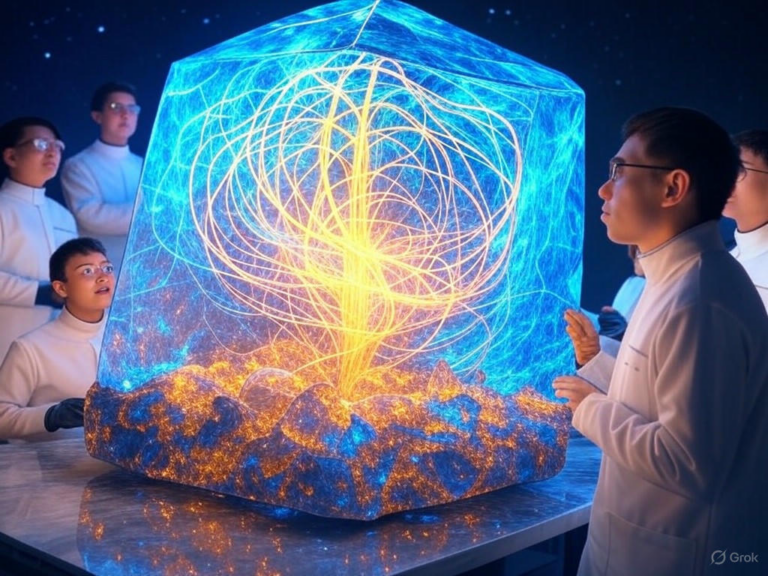
Underground Quantum Lab in US Mine Tests Next-Gen Tech
Exploring the Underground Quantum Lab at Its Core
In the heart of innovation, the Colorado School of Mines is blending its rich mining history with cutting-edge quantum advancements. Tucked deep inside the Edgar Experimental Mine in Idaho Springs, Colorado, lies the Colorado Underground Research Institute (CURIE)—a game-changing underground quantum lab that’s pushing quantum science toward unprecedented breakthroughs. Imagine harnessing an environment shielded from everyday interference to test technologies that could redefine our world—what could be more exciting?
This setup isn’t just about location; it’s about creating a space where quantum experiments thrive away from cosmic rays and noise. As researchers dive into this underground quantum lab, they’re unlocking potential for quantum sensors and computing that surface facilities can’t match, making CURIE a beacon for next-gen tech.
What Is the Underground Quantum Lab? CURIE Explained
The underground quantum lab known as CURIE stands out as one of the few shallow facilities worldwide dedicated to quantum device testing and rare-event physics. Unlike deeper, harder-to-access labs, CURIE offers a practical alternative, protected by layers of rock that block cosmic rays, electromagnetic disturbances, and surface chaos.
Have you ever thought about how even minor interference can derail delicate experiments? That’s where CURIE shines, providing a controlled haven for researchers.
Key Features That Make This Underground Quantum Lab Stand Out
- Low-background halls tailored for quantum research, minimizing noise for precise measurements
- Muon shielding and real-time monitoring to ensure ultra-clean data collection
- Flexible setups for quantum sensing, computing, and particle studies, welcoming both academics and industry pros
- Easy access points that foster collaboration, complete with state-of-the-art equipment like dilution refrigerators
Why Quantum Science Needs an Underground Quantum Lab
Quantum devices, from sensors to superconducting qubits, are incredibly finicky—they react to the slightest electronic or magnetic disturbances. By going underground, scientists can shield these tools, allowing for better detection of subtle effects and longer quantum coherence times, which are essential for reliable quantum computers.
Think about it: In a world full of background noise, how do you isolate the signals that matter? An underground quantum lab like CURIE makes that possible by slashing cosmic ray interference and vibrations.
Top Advantages of Working in an Underground Quantum Lab
- Drastically lower cosmic ray levels for sharper, more accurate measurements
- Reduced electromagnetic and vibrational noise, boosting overall device performance
- Extended coherence times that could pave the way for practical quantum computing applications
As Kyle Leach, a physics professor at the Colorado School of Mines, notes, “The sensitivity needed for groundbreaking science means environments like this underground quantum lab are no longer optional—they’re vital.”
Innovations Happening in the Underground Quantum Lab
Inside CURIE, the action is all about real-world progress across multiple fields. Researchers are exploring quantum sensing to detect single particles or weak magnetic fields with incredible precision, while quantum computing tests aim to see if underground conditions improve system stability.
What if we could use these tools to unravel cosmic mysteries? That’s exactly what’s unfolding here, with rare-event physics experiments targeting dark matter and neutrino behaviors.
- Quantum Sensing: Crafting detectors that spot faint signals, potentially revolutionizing fields from healthcare to security
- Quantum Computing: Evaluating how an underground quantum lab extends qubit life for faster, more efficient processing
- Rare-Event Physics: Probing elusive phenomena that could reshape our understanding of the universe
Spotlight on the VIPER Program in the Underground Quantum Lab
The VIPER program is taking things further by developing superconducting tech and low-threshold detectors within CURIE. With milliKelvin refrigeration and advanced qubit setups, it’s setting records for quantum hardware in this low-noise setting. This isn’t just theory—it’s hands-on innovation with tangible results.
How the Underground Quantum Lab Fits into Colorado’s Tech Scene
CURIE is a key player in Colorado’s growing quantum ecosystem, aligning with initiatives like the Elevate Quantum consortium. Backed by $127 million in funding, this underground quantum lab is bridging academia and industry, sparking commercialization in quantum tech.
It’s not just about big grants; it’s about building a community. For instance, students get hands-on training here, preparing them for careers in a field that’s exploding with opportunity.
Building Collaborations Around the Underground Quantum Lab
- A shared space for universities and companies in the Mountain West region
- Practical training programs in quantum engineering and computing
- Economic boosts through attracting startups and investments
- Links to programs like the Quantum Incubator for ongoing support
Delving Deeper: The Impact of the Underground Quantum Lab
Carved into 200 meters of rock, CURIE offers ideal conditions for cutting-edge experiments. Let’s compare it quickly to traditional labs—CURIE wins on interference reduction and flexibility, making it a go-to for precise work.
| Feature | Underground Quantum Lab (CURIE) | Standard Surface Labs |
|---|---|---|
| Cosmic Ray Interference | Greatly minimized | Constant challenge |
| Electromagnetic Noise | Naturally shielded | Often needs extra barriers |
| Customization Options | Highly adaptable | Limited by space |
| Accessibility | Open to all partners | Sometimes restricted |
One cool angle is how CURIE integrates self-driving labs—AI-powered systems that automate experiments. This could speed up discoveries in materials science, much like how automated tools are already transforming labs globally, as highlighted in a recent ACS study.
The Future of Underground Quantum Labs
As quantum research evolves, facilities like CURIE are leading the charge, offering shielded spaces for advanced experiments on dark matter and scalable computing. We’re on the cusp of a new era where these labs could become standard for high-precision work.
Looking ahead, expanding access to underground quantum labs might just democratize innovation. What role could this play in your field?
Key Trends for Underground Quantum Labs in the Coming Years
- Increasing industry partnerships for broader applications
- Testing benchmarks to optimize quantum computing underground
- Creating new sensors for real-world uses in medicine and security
- Educating future experts to keep the momentum going
Wrapping Up: The Promise of Underground Quantum Labs
The underground quantum lab at the Colorado School of Mines is more than a facility—it’s a catalyst for change. By enabling precise experiments and fostering partnerships, CURIE is positioning the US as a leader in quantum tech. From historic mines to future breakthroughs, the potential is endless.
If this sparks your interest, share your thoughts in the comments below or check out our other posts on emerging tech. What excites you most about quantum advancements?
References
- Colorado School of Mines Newsroom. “Colorado School of Mines Developing Quantum Research Lab Inside Literal Mine.” Link.
- CURIE Official Site. Link.
- Undergraduate Research at Mines. “VIPER Underground Quantum Technologies.” Link.
- Ground News. “Denver7 Exclusive: Inside Colorado Mine Where an Underground Lab Could Unlock Secrets of Quantum Computing.” Link.
- ACS Publications. “Self-Driving Laboratories and Accelerating Materials Science.” Link.
- Colorado School of Mines Newsroom. “Colorado School of Mines Helps Bring Innovative Quantum Incubator to Colorado.” Link.
- Brown University CS. “Quantum Computing: Progress and Prospects.” Link.
- Fermilab News. “Fermilab Leads Project to Develop Novel Quantum Sensor.” Link.
underground quantum lab, CURIE, Colorado School of Mines, quantum sensors, quantum technology, quantum computing, rare-event physics, Edgar Mine, quantum research, next-gen tech







